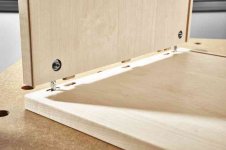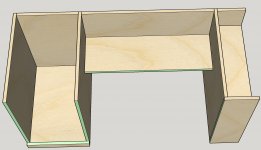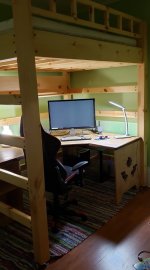From the Supplemental User's Manual:
[quote author="Rick Christopherson"]
Domino Tenon Placement Guidelines
There are no steadfast rules on where tenons should be placed, especially when they are used for alignment purposes. For edge joining boards, a typical placement might be 6 to 8 inches apart.
However, when tenons are used to strengthen a joint, you might be tempted to place the tenons too close together. This can actually weaken the joint by removing too much of the substrate material.
► A wide mortise weakens the substrate, so it is better to have several narrow mortises with uncut space in between than it is to have a single wide mortise with several tenons side-by-side.
► When placing several tenons close together, leave at least twice the tenon thickness between mortise holes. As a general rule, this means the minimum tenon spacing should be about 10 mm to 20 mm, but they can be spaced much wider.
► When creating stacked mortises for extra thick lumber, an extension of the “1/3 rule” mentioned above still applies. Specifically, the distance between mortises and the distance between a mortise and the wood surface should all be equal to (or larger than) the thickness of the tenon.
[/quote]
The strength of the joint is dependent on the directional forces. Generally speaking, if you are dealing with a sheer force then much of the strength will come from the additional dominos.
You would have to explain a little more about what you are building for anyone to recommend what domino spacing would work best, but like the Supplemental Manual suggests 6-8 inches is about the maximum spacing.
The picture attached is from the Festool website.
Hope this helps!




